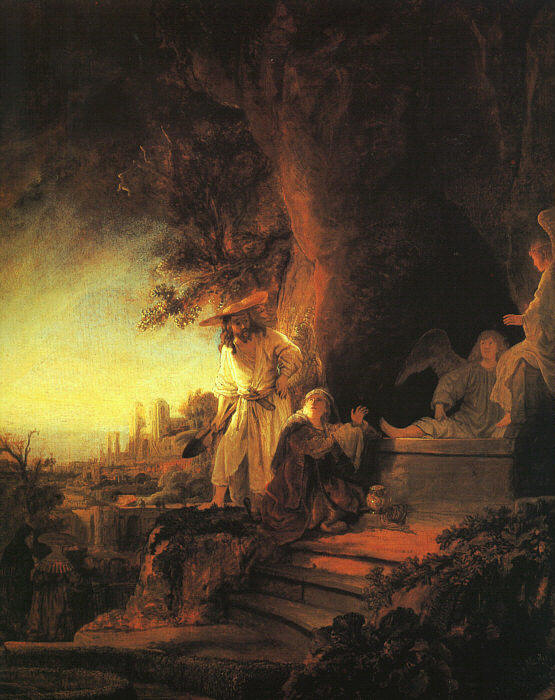Artists have created a complex view of Mary Magdalene through the ages.

She was the first person to see the resurrected Christ (as depicted by Rembrandt above.) She went and told the apostles about it and they didn’t believe her, which is why she is sometimes called the apostle to the apostles. You would think this would be enough to settle once and for all the question of women in the Christian priesthood, but church tradition weighs more than the plain lessons of Jesus in many (if not most) cases.
Her extraordinary position at the center of the miracle of the resurrection was further undermined by the later church legend that Mary Magdalene was a reformed prostitute, identified with one of the prostitutes Jesus encounters in the Gospels. There is no Biblical justification whatsoever for this identification, but it served the church fathers in subtly undermining the position of the Magdalene and it was a Godsend to artists through the ages, allowing them to bring some raw sex into New Testament imagery. Jules-Joseph Lefebvre has a go at it in the painting at the beginning of this post, Antonio Canova in the statue below, both works of the 19th Century. Cecil B. DeMille milked the legend for all it was worth in his his silent epic King Of Kings.
Giotto (probably supervising two students working more or less in his style) takes us back to the source in his powerful fresco of Mary Magdalene’s encounter with her risen Lord, at the church of St. Francis in Assisi. Bold, severe, painted with simplicity and awe, it shows us the Mary Magdalene of the Gospels — a woman at the center of a majestic mystery:
